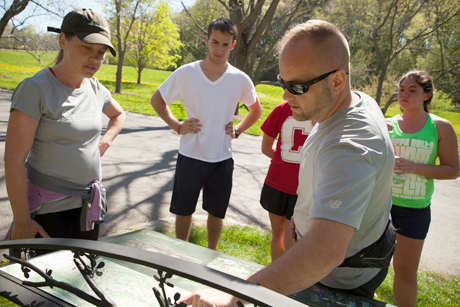Take arboretum's self-guided smartphone tour

Cornell Plantations now offers a self-guided, mobile phone audio-visual tour and four new interpretive and orientation signs to help visitors learn more about the unique collections in the 150-acre F.R. Newman Arboretum.
These enhancements, made possible by a $20,000 grant from the Stanley Smith Horticulture Trust, will help the tens of thousands of annual visitors learn, for example, that the striped maple (Acer pennsylvanicum), a small tree with distinct vertical white stripes on its bark, is also called moosewood, named for a nearby famous restaurant; and that the much loved Sculpture Garden was not intended to survive past the year it was constructed in 1962.
“The aim of all interpretation in the arboretum is to emphasize the significance of plant diversity and how plants strongly affect human well-being,” said Sarah Fiorello, interpretation coordinator at Cornell Plantations. “Before these interpretive upgrades in the arboretum, many visitors viewed the space as a beautifully manicured park, not as an arboretum – with significant plant collections that are used for educational and research purposes. It’s our hope that these visitor enhancements will help bring a fuller awareness to our visitors.”
The collections located in the F.R. Newman Arboretum include nut trees, crabapples, oaks, maples, shrubs and urban trees. There are also specialty gardens found in the arboretum, including the Zucker Shrub Collection and the Treman Woodland Walk. Each new sign has a unique base designed by artist/ blacksmith Durand Van Doren.
Media Contact
Get Cornell news delivered right to your inbox.
Subscribe